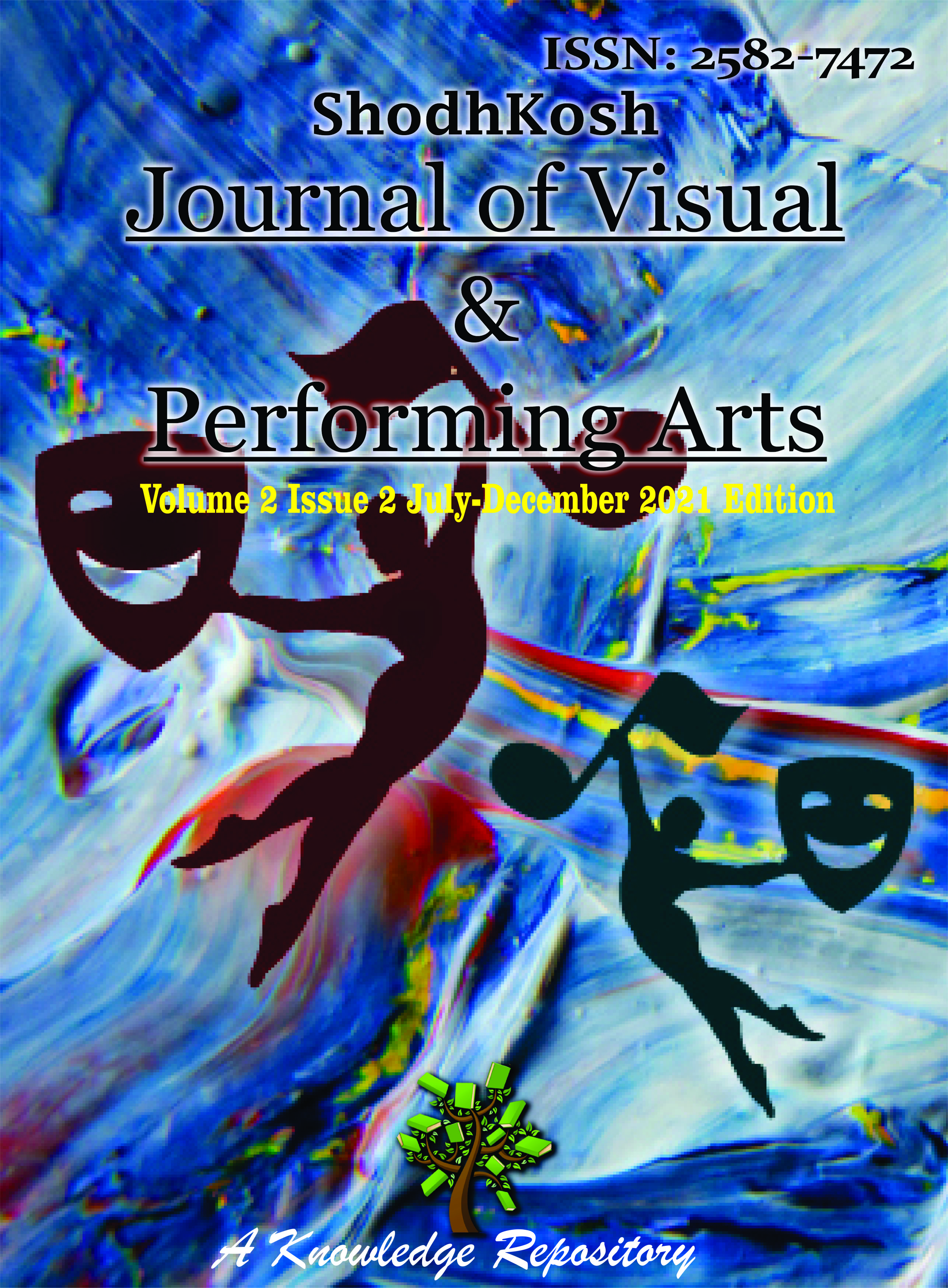EXPLORING PERSPECTIVES IN ART: THE ESSENCE OF BEAUTY– OBJECTIVE OR SUBJECTIVE
DOI:
https://doi.org/10.29121/shodhkosh.v2.i2.2021.4257Keywords:
Asthetics, Fine Arts, Craft, Pure Arts, Applied Art, Plastic Arts, Visual Arts, Performance Arts, Taste, Immediacy, Disinterest, Expression, Form, Interpretation, Motivated Functions, Non-motivated Functions, Value JudgementAbstract [English]
Humans have been creating art in various forms since ages to express themselves. Art is a therefore not only an important but also an essential aspect of human evolution as well as civilization. This paper aims to explore art and its related issues. Since art reflects the societal values, technological advancements, and philosophical thought through different cultures and eras, the paper follows the trajectory of art through history. It also presents the key aspects of art which include its ability to evoke emotions, convey messages, and challenge perceptions, providing the human experience with platforms of intricate expressions.
The paper also emphasises on the difference between art and craft denoting both their essential features respectively. It is important to understand and appreciate the differences. It is also important to note that there are many kinds of arts, the classification of which generally includes categories such as visual arts, performing arts, and literary arts, etc. each possessing its unique characteristics and purposes.
The standards of beauty in art have been under discussion for the longest time. There has always been a debate about whether the beauty in arts should be judged by universal rational principles like symmetry and harmony, by empirical individual standards encompassing cultural contexts, personal preferences, etc. In this light the paper will touch upon the western theory of art, with special reference to theory of taste. The paper would then move on to analyse the purpose or function of art and conclude by looking at the idea of value judgement itself.
References
Gombrich, E. H, The Story of Art, London: Phaidon Press Ltd, 1962
Foster Hal, Krauss Rosalind, Bois Yve-Alain, and Buchloh H. D. Benjamin, Joselit David, Art Since 1900: Modernism Antimodernism Postmodernism, London: Thames and Hudson, 2016
Heidegger, Martin, The Origin of the Work of Art, (Tr. Young Julian and Haynes, Kenneth), Cambridge University Press, 2002
Arnold Dana, Art History: A Very Short Introduction, Oxford University Press, 2004 DOI: https://doi.org/10.1093/actrade/9780192801814.001.0001
Aldrich, Virgil C., Philosophy of Art, N.J.: Prentice Hall, 1963
Frye, Northrop, The Well-Tempered Critic, Fitzhenry and Whiteside Ltd., 1983
Stecker, Roberts, Aesthetics and the Philosophy of Art: An Introduction, Rowman and Littlefield Publishers, 2005
Kant Immanuel, Critique of Judgment (Tr. by Bernard, J.H.), London: Macmillan and Co. Ltd.,1914
Kant Immanuel, Critique of Judgment (Tr. by Bernard, J.H.), London: Macmillan and Co. Ltd.,1914
Gombrich, E. H, The Story of Art, London: Phaidon Press Ltd, 1962
Danto, Arthur C., Remarks on Art and Philosophy, ASAP, 2014
Danto, Arthur C., Remarks on Art and Philosophy, ASAP, 2014
Stecker, Roberts, Aesthetics and the Philosophy of Art: An Introduction, Rowman and Littlefield Publishers, 2005
Stecker, Roberts, Aesthetics and the Philosophy of Art: An Introduction, Rowman and Littlefield Publishers, 2005
Breton, André, First Manifesto of Surrealism (in Art in Theory 1900-1990: An Anthology of Changing Ideas, by Harrison Charles and Wood, Paul), Oxford: Blackwell Publishers, 1992
Downloads
Published
How to Cite
Issue
Section
License
Copyright (c) 2021 Dr. Shweta

This work is licensed under a Creative Commons Attribution 4.0 International License.
With the licence CC-BY, authors retain the copyright, allowing anyone to download, reuse, re-print, modify, distribute, and/or copy their contribution. The work must be properly attributed to its author.
It is not necessary to ask for further permission from the author or journal board.
This journal provides immediate open access to its content on the principle that making research freely available to the public supports a greater global exchange of knowledge.




























